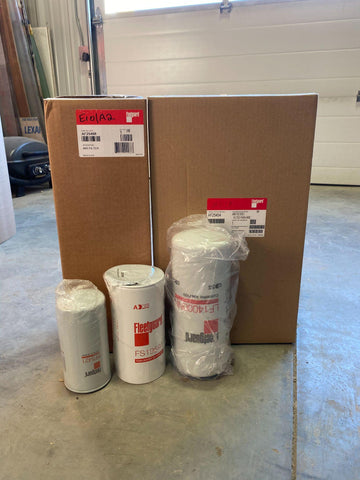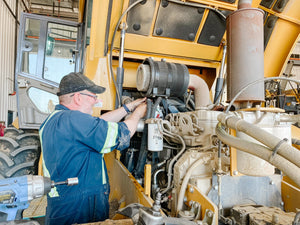Hydraulic seals manage the movement of fluid in devices that utilize reciprocating motion. They are a vital component of hydraulic cylinders, which have widespread applications in heavy-duty machinery such as bulldozers, cranes, excavators, asphalt pavers, forklifts, tractors, and other heavy equipment used in construction and agriculture. In addition, hydraulic seals play a crucial role in converting fluid power to linear motion.
Materials used to make a hydraulic seal

The material used to make a hydraulic seal depends on the fluid's operating environment, pressure, temperature and the type and chemical properties. Rubber, polyurethane, and polytetrafluoroethylene (PTFE) are the most commonly used.
Types of hydraulic seals

Static hydraulic seals are found in grooves and experience little to no movement. Their role is to seal, much like a gasket. When a static hydraulic seal is compressed, horizontal expansion relieves the pressure. It is, therefore, imperative to check that the groove is wider than the seal to prevent over-compression.
Dynamic hydraulic seals, on the other hand, experience some degree of movement and come in several varieties. Rod seals, for example, experience movement along the rod or shaft or a hydraulic cylinder to prevent the leaking of pressurized fluid and are arguably the most crucial seal on any piece of hydraulic equipment. Unidirectional rod seals function to seal dynamic pressure from one side. Buffer seals, for example, help a system’s primary rod seal to absorb pressure spikes. Bidirectional rod seals, such as some piston seals, manage pressure from both sides to ensure stability and prevent damage. For most applications, nonsymmetrical piston seals, in which the outer diameter lip differs in shape from the inner diameter lip, provide better performance and stability than symmetrical seals.
Causes of hydraulic seal wear

Any motion apparatus will, over time, experience some degree of wear, and hydraulic cylinder seals are no exception. The sliding movement of a piston along the tube of a hydraulic cylinder causes surface scoring and carries the risk of more significant seal damage and leakage. The solution? Wear rings prevent cylinder damage by mitigating friction caused by metal-to-metal contact. They are typically made of PTFE, engineered plastic, or alloy. Because their role is to protect seals, the wear rings should be more durable than the seals.
Factors such as high temperature, high pressure and significant extrusion gaps may warrant backup rings, which work alongside O-ring gaskets or hydraulic seals to manage pressure. With unidirectional seals, backup rings are placed on the opposite side of the seal, while two rings (one on each side of the seal) are needed for bidirectional seals.

The success of any heavy-duty operation depends on strong hydraulic seals. Weak, incorrectly sized or misplaced seals can cause expensive damage and leakage and pose a danger to workers. Whatever your application, Prolon offers a wide variety of high-quality seals, wear rings, gaskets, pipe couplings, and other components manufactured to exact specifications to ensure maximum safety and maximum performance at minimum cost.


